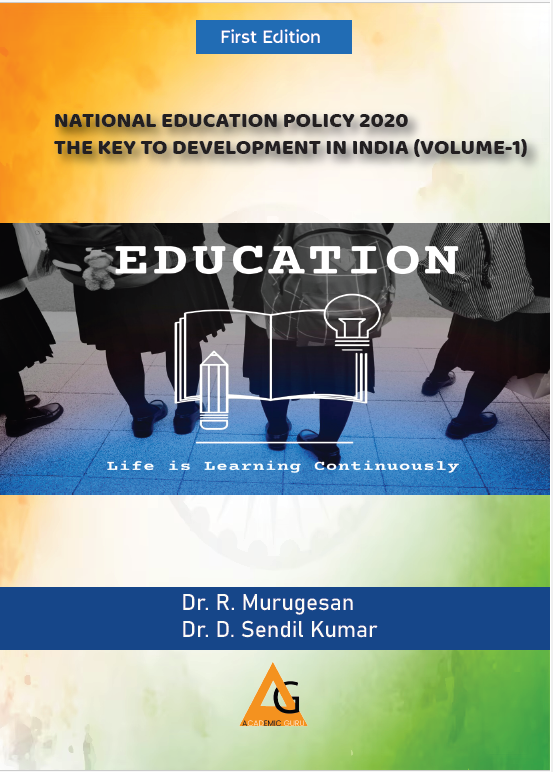NEP 2020 and Skill Development: Bridging the Gap between Education and Employment
Keywords:
NEP 2020, Employment, Government, Gaps, SkillAbstract
The National Education Policy 2020 will function as a comprehensive overhaul of the educational system with the aim of enhancing the employability of individuals in the coming years. The NEP 2020 underscores indispensable attributes that contribute to a gratifying professional trajectory, thereby emphasizing the significance of education in equipping students with said skills. The NEP 2020 places emphasis on the significance of education in equipping students with the necessary abilities. The paper examines the factors that contribute to the lack of employability among Indian graduates and assesses the steps that must be taken to address this critical issue by effectively implementing the National Employment Policy (NEP).
References
[1]. Bano, Y., & Vasantha, S. (2019). Review on strategies for bridging the employability skill gapin higher education. International Journal of Recent Technology and Engineering, 7(6), 1147-1154.
[2]. Bhatnagar, M. (2021). A study on bridging the employability skill gap in higher education - NEP 2020 & beyond. HANS SHODH SUDHA, Vol. 2, Issue 1, (2021), 2(1), 29-34.
[3]. Chaurasia, D., & Veeriah, P. (2023). Skill Development Opportunities and its Influence on Employability of Students. Indian Journal of Vocational Education, 35(September).
[4]. Choure, M., & Singh, P. (2023). Understanding the Role of NEP 2020 in Promoting Vocational Education for Making India Skilled and Atmanirbhar. International Journal of Advanced Research in Science, Communication and Technology (IJARSCT), 123-129. https://doi.org/10.48175/IJARSCT-15136
[5]. Chowdhury, K., Bhim, D., Mondal, C., & Mahavidyalaya, B. (2022). Fostering Vocational Education among Students through the Lens of National Education Policy 2020. Nsou-Open Journal, 5(1), 2581-5415.
[6]. Dash, S. R. (2024). NEP-2020 A ROAD MAP FOR FUTURE A SPECIAL REFERENCE TO RESEARCH AND HIGHER EDUCATION. International Research Journal of Modernization in Engineering Technology and Science, 03, 619-626.
[7]. Gedar, N., & Yadav, A. (2023). NEP 2 020 ' s Contribution to Generating Employment Opportunity Through Student ' s Skill Development. Journal of Emerging Technologies and Innovative Research, 10(9), 822-827.
[8]. Kanungo, S. S. (2024). A Critical Analysis of India's National Education Policy 2020 and its Alignment with the UN SDGs. Educational Administration Theory and Practices, 30(4), 791-796. https://doi.org/10.53555/kuey.v30i4.1561
[9]. Kaur, H. (2024). National Education Policy (Nep) 2020: Skill Enhancement Through Vocational Education. Edumania-An International Multidisciplinary Journal, 02(01), 23-32. https://doi.org/10.59231/edumania/9015
[10]. Kumar, D. S. (2022). Vocational Education And Skill-Enhancement in The NEP-2020. International Journal of Creative Research Thoughts (IJCRT), 10(5), 87-93.
[11]. Lowe, D., & Galhotra, B. (2023). International Journal of Research Publication and Reviews NEP 2020 : Transitioning Towards a Skill-Centric Education System. International Journal of Research Publication and Reviews, 4(9), 1708-1710.
[12]. Lukose, M. (2023). A Study on the Role of NEP 2020 : Skill Development of Students. Amity International Journal of Teacher Education (AIJTE), 9(1).
[13]. Sharma, S., & -, N. T. (2023). Employability & Youth - A Perspective in Harmony with NEP 2020. International Journal For Multidisciplinary Research, 5(6). https://doi.org/10.36948/ijfmr.2023.v05i06.8806
[14]. Sharma, S., & Neetika Trivedi. (2023). Employability & Youth - A Perspective in Harmony with NEP 2020. International Journal For Multidisciplinary Research, 5(6), 1-6. https://doi.org/10.36948/ijfmr.2023.v05i06.8806




